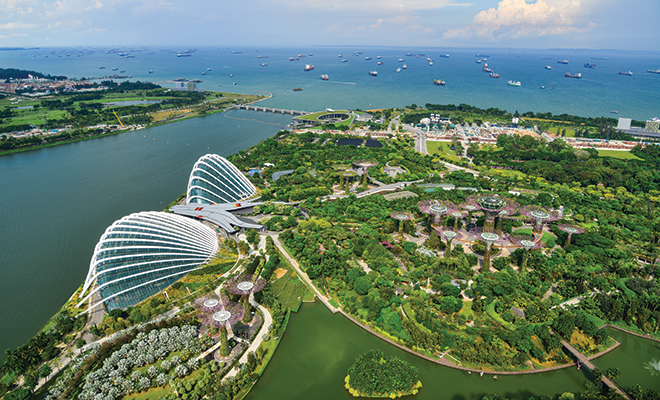
The World’s Sustainable Cities
Cities have been centers of business, culture and innovation for centuries, drawing in people looking for opportunity and a better life. Over four billion of us live in cities around the world today, representing half the world’s population. The word’s urban population is expected to double in size by 2050, with two out of three people calling a city home. Many of the new city dwellers will be people who have been forcibly displaced from their home regions.
This rapid urbanization can have a devastating effect on the environment, especially when large segments of the population live in urban slums without access to clean water, electricity and other basic necessities. An additional problem with the world’s largest cities is that more than 90 percent have been built in coastal areas, making them vulnerable to powerful storms, rising tides and other issues related to climate change. The dual challenges of growing urban populations and coastal climate change has led to the rise of a sustainable cities movement.
The idea of a sustainable city has been around for a few decades. Although there’s no single definition for the term, there seems to be consensus that a sustainable city is designed to meet the needs of its current inhabitants without sacrificing the needs of future dwellers. This applies to everything from feeding city inhabitants to providing non-polluting energy and transportation and disposing of waste without destroying the surrounding environment.
A large number of institutes and organizations are currently working toward sustainable cities, including universities, government agencies and non-profits. One of these is Climate Reality, an education and advocacy non-profit founded by former U.S. Vice President Al Gore in 2006. The organization recently published a list of its favorite sustainable cities. Of course, cities aren’t designed fresh from the ground up. Most of the time, urban developers and planners must work with existing infrastructures and populations as they introduce sustainable initiatives, as seen in the age of many of the cities on the list.
Copenhagen, Denmark
This city of two million, where walking and cycling are supported over cars, is frequently ranked as one of the world’s greenest and most livable cities. Nearly half of all commuters ride to work on bicycles on dedicated cycling superhighways. The city’s infrastructure includes energy-efficient heating and cooling systems that connect to nearly every residence, part of a commitment to be the first carbon-neutral national capital by 2025.
San Francisco, California
The City by the Bay has invested in sustainable transportation with hybrid-electric buses and has reduced water consumption by nearly half compared to the national average, an important measure in a state subject to drought. The city’s waste management goal is to ramp up recycling and send nothing to landfills by 2020. In addition, San Francisco was the first U.S. city to mandate that all new construction incorporate either solar or living plants on the roof, or both.
Vancouver, Canada
This city was one of the first to recognize the impact of climate change, releasing a report on the topic in 1990. Vancouver has made a commitment to get all sources of energy from renewable sources by 2050, including electricity as well as energy for heating, cooling and transportation. The effort to meet this goal has already led to the city’s having fewer greenhouse gas emissions per person than any other North American city.
Stockholm, Sweden
Like Copenhagen, Sweden is an older city that nevertheless has become a leader in green initiatives. With a goal of being fossil-fuel free by 2040, the city converted from oil for heating to more efficient sources for more than 80 percent of apartments in the city. Bio-fuel generated from sewage is available at many filling stations, allowing the city to make great strides toward its zero fossil-fuels goal.
Singapore
This city-state of five million calls itself the Garden City to reflect its role as one of the greenest in Asia. Car ownership is limited but the city has compensated with an effective transit system and plenty of opportunities for biking and walking. One of Singapore’s sustainability goals is to have 80 percent of households no farther than a 10-minute walk from a train station. The city also promotes the creation of new green spaces on the roofs and terraces of buildings that replace open areas.
The decisions made by city planners and developers today about transportation, fuel, water use, waste disposal and economic development will have long-term impact on the people who live there as well as the surrounding region. Making these decisions from the perspective of sustainability is the best way to make sure these decisions work in favor of the environment as well as people who call the city home. ■
Sources: climaterealityproject.org, worldbank.org and nationalgeographic.com.







